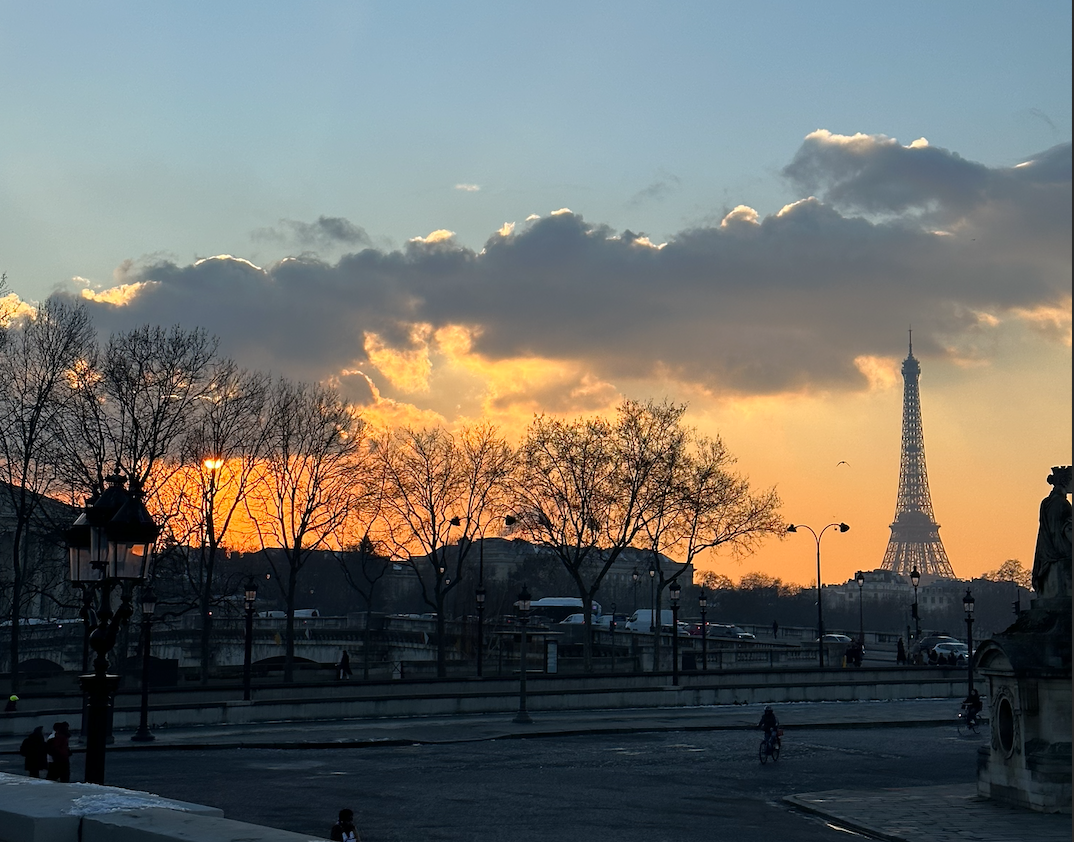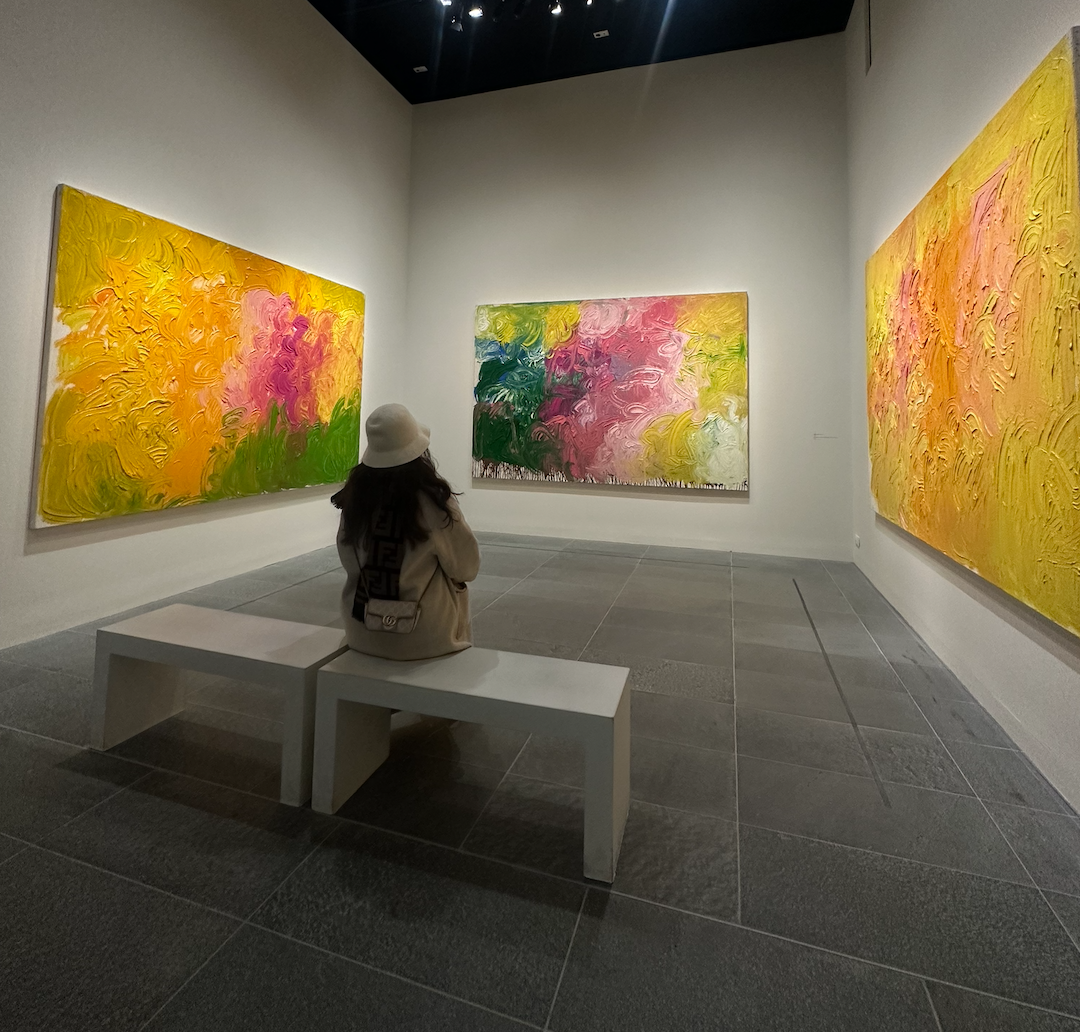Musee de l'Orangerie, Where Art Meets Serenity

Paris has long been a haven for art enthusiasts seeking to immerse themselves in the beauty of iconic masterpieces by transcending time and space through museum visits. While the Louvre and the Musée d'Orsay tend to hog the spotlight, tucked away and often overlooked in the heart of the Tuileries Gardens lies a beautiful glasshouse that epitomizes the essence of iconic artists: the Musée de l'Orangerie. Whether taking a seat beside the museum to observe the colorful sun setting along the Seine, or to physically explore the historic greenhouse, this location should be at the top of your Parisian bucket list.
Originally built in 1882 to house orange trees during the winter months, The Musée de l'Orangerie offers a unique and intimate experience with some of the most influential artworks of the 20th century. The exhibits focus on impressionism and post-impressionist features both within the permanent and temporary collections. Situated near the banks of the Seine, this museum provides an oasis of calm in the bustling city, allowing visitors to treasure the beauty of renowned artists without the crowds that often accompany their more famous works. As you step inside, you immediately feel transported away from the chaos into a sophisticated and calm atmosphere, allowing for true immersion and appreciation of the artworks.
The exhibition space is known as a sanctuary for iconic artist Claude Monet, where eight panoramic installations of his Water Lilies are present. Within two oval rooms side-by-side, together forming an infinity symbol, each wall dedicates itself to the collection. One can truly observe the wonders of each piece, especially with the glass roof structure permitting all-natural light to accurately display the earth tones and abstract natural imagery. The space allows for complete immersion, seemingly as if you are sat by a dream-like pond encompassed by beautiful water lilies and willow trees. I found myself situated in the middle of the room for over twenty minutes, pondering and journaling in my notebook, something that seems rather impossible in the middle of an exhibition room of the Louvre. The semi-circular shape of the grand canvases allows for close observation of fascinating color mixing and paint application, luring you to take your time in appreciation.
Water Lilies by Claude Monet (Image Credit: Isabel Raggio)As you step into the museum's hollowed halls on the lower level, you are immediately enveloped by an atmosphere of tranquility and contemplation through an industrial architectural style. The basement galleries house an impressive collection of Cubist works, featuring artists who challenged traditional artistic boundaries. In addition to Monet, there are idols of the Cubist movement, including Pablo Picasso and Henri Rousseau. Picasso's Grand Nu à la draperie and Rousseau's La Noce are among the highlights, capturing the spirit of innovation and rebellion that defined the era. The juxtaposition of these works within the museum's serene setting creates a unique dialogue between tradition and experimentation, allowing visitors to appreciate the evolution of art in a contemplative environment.
Lower floor of the museum (Image Credit: Isabel Raggio)What sets Musée de l'Orangerie apart is its ability to showcase these iconic artists in a setting that encourages reflection and connection. Unlike larger institutions, where the sheer scale of the collections can be overwhelming, this museum invites visitors to engage intimately with the artworks which fosters a deeper understanding of the artists' intentions and the cultural context in which they thrived. A tribute to Hermann Nitsch, an Austrian painter partaking in the short-lived Viennese Actionism movement, provided a refreshing comparison to the usual artworks on display. During my visit, the temporary exhibition allowed for the further strengthening of my understanding of artistic concepts and history—as I learned about a radical artistic era.
Painting by Hermann Nitsch (Image Credit: Isabel Raggio)
The Musee de l'Orangerie stands as a testament to the enduring legacy of iconic artists who shaped the course of art history. The intimate setting and carefully curated collection offer a refreshing alternative to the grandeur of larger museums, allowing visitors to connect with the art on a personal level. As you wander through its hushed galleries, surrounded by the genius of Monet, Picasso, and Rousseau, you can't help but feel a profound appreciation for the beauty that arises when art and serenity converge in the heart of Paris.
Location: Jardin de Tuileries, 75001 Paris Opening Schedule: Monday, Wednesday to Sunday (9h-18h), Tuesday (closed) Access: Paid ticket (10-13 euros), but free of charge if under 25 (and proof of ID) Upcoming Temporary Exhibitions: Robert Ryman.The Gaze in Action (March 6-July 1) Wolfgang Laib. A mountain that cannot be climbed, For Monet (March 6-July 8)




